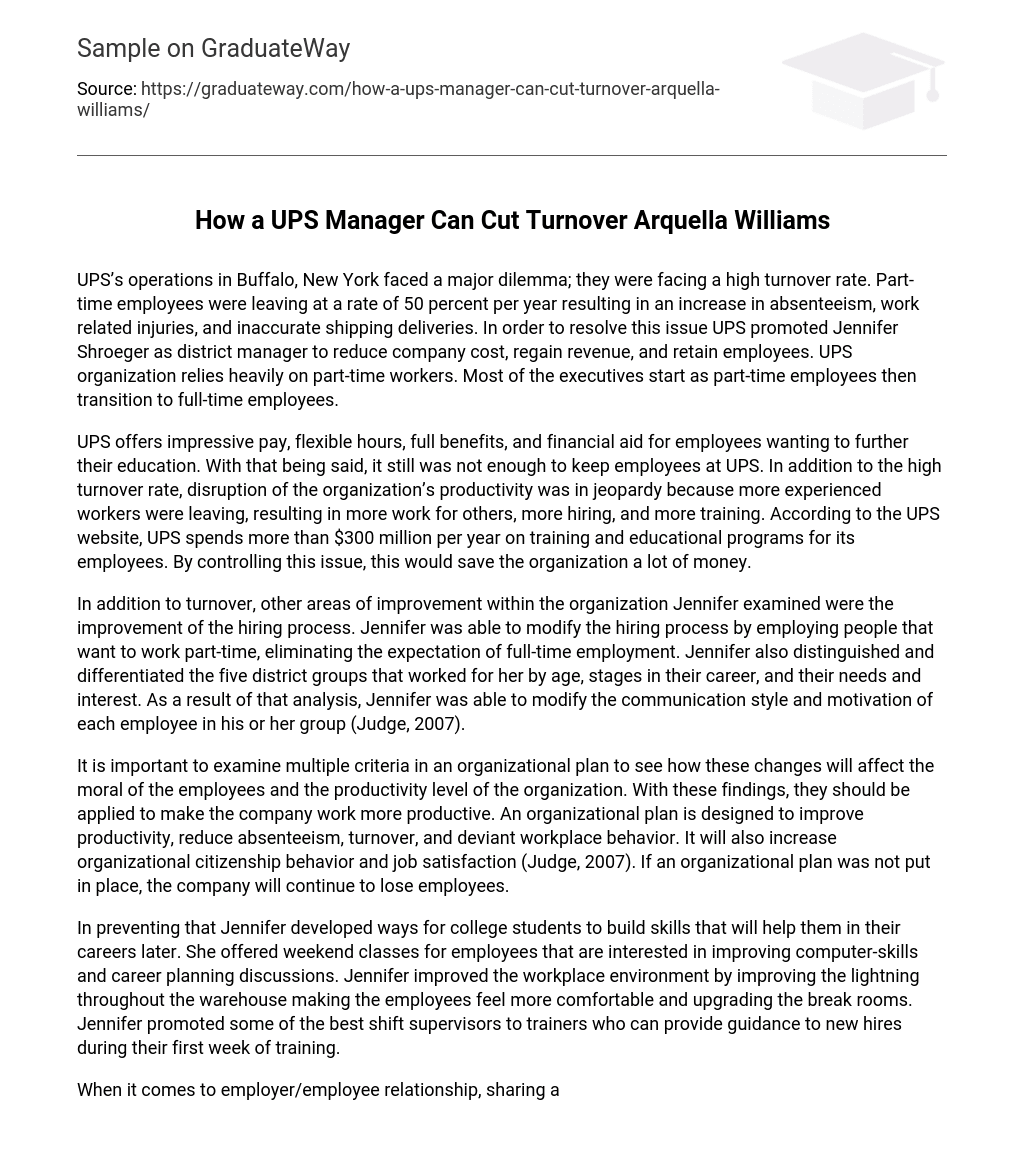UPS’s operations in Buffalo, New York faced a major dilemma; they were facing a high turnover rate. Part-time employees were leaving at a rate of 50 percent per year resulting in an increase in absenteeism, work related injuries, and inaccurate shipping deliveries. In order to resolve this issue UPS promoted Jennifer Shroeger as district manager to reduce company cost, regain revenue, and retain employees. UPS organization relies heavily on part-time workers. Most of the executives start as part-time employees then transition to full-time employees.
UPS offers impressive pay, flexible hours, full benefits, and financial aid for employees wanting to further their education. With that being said, it still was not enough to keep employees at UPS. In addition to the high turnover rate, disruption of the organization’s productivity was in jeopardy because more experienced workers were leaving, resulting in more work for others, more hiring, and more training. According to the UPS website, UPS spends more than $300 million per year on training and educational programs for its employees. By controlling this issue, this would save the organization a lot of money.
In addition to turnover, other areas of improvement within the organization Jennifer examined were the improvement of the hiring process. Jennifer was able to modify the hiring process by employing people that want to work part-time, eliminating the expectation of full-time employment. Jennifer also distinguished and differentiated the five district groups that worked for her by age, stages in their career, and their needs and interest. As a result of that analysis, Jennifer was able to modify the communication style and motivation of each employee in his or her group (Judge, 2007).
It is important to examine multiple criteria in an organizational plan to see how these changes will affect the moral of the employees and the productivity level of the organization. With these findings, they should be applied to make the company work more productive. An organizational plan is designed to improve productivity, reduce absenteeism, turnover, and deviant workplace behavior. It will also increase organizational citizenship behavior and job satisfaction (Judge, 2007). If an organizational plan was not put in place, the company will continue to lose employees.
In preventing that Jennifer developed ways for college students to build skills that will help them in their careers later. She offered weekend classes for employees that are interested in improving computer-skills and career planning discussions. Jennifer improved the workplace environment by improving the lightning throughout the warehouse making the employees feel more comfortable and upgrading the break rooms. Jennifer promoted some of the best shift supervisors to trainers who can provide guidance to new hires during their first week of training.
When it comes to employer/employee relationship, sharing a little personal information often helps the professional relationship. It is also a good management technique to have. It shows that employees are valued as a person not just an employee of a company. Pointing out good attributes to employees will help keep them motivated and dedicated to continue to work at a exceed level. The facts that support the argument that organizational behavior is approached in a contingency perspective are Jennifer’s improvement of the hiring process, communication, workplace conditions, and supervisor training.
Jennifer was able to examine the information provided to her through the UPS database on her district employees to develop and improve career development. She improved the conditions of the workplace and expanded supervisor training. The approach Jennifer made in cutting the turnover rate for UPS resulted in a reduction of the turnover rate from 50 percent per year to 6 percent per year. She was able to save the company an annual of $1 millions dollars and reduce the loss of workdays due to work-related injuries by 20 percent. Finally, inaccuracies in delivery dropped from 4 percent to 1 percent.





